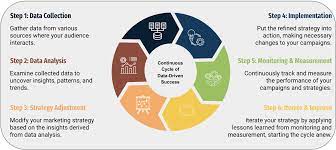The Impact of Environmental Graphics on Spaces
Environmental graphics play a crucial role in shaping the atmosphere and identity of physical spaces. From offices and retail stores to public areas and educational institutions, these graphics have the power to transform bland environments into engaging and memorable experiences.
One of the key functions of environmental graphics is to communicate information effectively. By strategically placing signage, wayfinding elements, and branding visuals, spaces become more navigable and user-friendly. Visitors can easily identify different areas, understand directions, and connect with the overall purpose or theme of the space.
Besides providing practical guidance, environmental graphics also contribute to the aesthetic appeal of a space. Thoughtfully designed graphics can enhance the ambiance, evoke emotions, and create a cohesive visual language that ties everything together. Whether through vibrant murals, subtle patterns, or striking typography, these visuals add personality and character to otherwise sterile environments.
Moreover, environmental graphics have the potential to convey brand messages and values effectively. By incorporating logos, colors, and imagery that align with a brand’s identity, spaces can reinforce brand recognition and establish a strong visual presence. This consistency across physical environments helps build trust with customers and fosters brand loyalty.
In addition to their functional and branding purposes, environmental graphics also play a role in promoting sustainability and raising awareness about environmental issues. Eco-friendly materials, green messaging, and nature-inspired designs can inspire people to think more consciously about their impact on the environment while creating visually appealing spaces that prioritize sustainability.
In conclusion, environmental graphics are powerful tools that go beyond mere decoration. They shape our interactions with physical spaces, convey information efficiently, enhance aesthetics, reinforce branding efforts, promote sustainability initiatives, and ultimately contribute to creating memorable experiences for all who encounter them.
Understanding Environmental Graphics: Key FAQs and Examples
- What is eco graphic?
- What are the five examples of environmental design?
- What are the benefits of environmental graphics?
- What is the meaning of environmental graphics?
- What is an example of environmental graphic design?
- What is an example of environmental signage?
- What is wayfinding or environmental graphics?
What is eco graphic?
An eco graphic, also known as an eco-friendly graphic or sustainable graphic, refers to visual designs and elements that are created with environmentally friendly practices and materials in mind. These graphics are designed to minimize their impact on the environment by using renewable resources, recycled materials, non-toxic inks, and energy-efficient production processes. Eco graphics aim to promote sustainability and raise awareness about environmental issues through their design and production methods. By incorporating eco-conscious principles into graphic design, businesses and individuals can contribute to a greener future while still achieving visually impactful results.
What are the five examples of environmental design?
When exploring the realm of environmental design, five prominent examples often stand out as key illustrations of this creative discipline. Firstly, architectural signage serves as a crucial aspect of environmental design, guiding individuals through spaces with clarity and style. Secondly, wayfinding systems play a vital role in helping people navigate complex environments such as airports or hospitals efficiently. Thirdly, experiential graphics transform physical spaces into immersive storytelling experiences, engaging visitors on a deeper level. Fourthly, sustainable design practices prioritize eco-friendly materials and processes to minimize environmental impact while enhancing aesthetics. Lastly, branded environments seamlessly integrate a company’s identity into physical spaces, creating cohesive and memorable brand experiences for customers and employees alike. These examples showcase the diverse and impactful nature of environmental design in shaping our interactions with the built environment.
What are the benefits of environmental graphics?
The benefits of environmental graphics are multifaceted and impactful. These visuals serve as effective tools for enhancing wayfinding and navigation within spaces, improving user experience, and creating a cohesive and visually appealing environment. By incorporating branding elements, environmental graphics also help reinforce brand identity and messaging, fostering brand recognition and loyalty among visitors. Furthermore, environmental graphics can contribute to the overall ambiance of a space, evoking emotions, promoting sustainability through eco-friendly designs, and raising awareness about important issues. In essence, the benefits of environmental graphics extend far beyond mere aesthetics, playing a vital role in shaping the functionality, identity, and atmosphere of physical environments.
What is the meaning of environmental graphics?
Environmental graphics refer to the visual elements and design strategies used to enhance and transform physical spaces. These graphics encompass a wide range of visual components, including signage, wayfinding systems, murals, branding elements, and decorative motifs that contribute to the overall aesthetic and functionality of a space. Essentially, environmental graphics serve as a means of communication, guiding individuals through spaces, reinforcing brand identity, creating engaging atmospheres, and conveying information in a visually compelling manner. By integrating graphic elements seamlessly into architectural environments, environmental graphics play a vital role in shaping the user experience and establishing a sense of place within various settings.
What is an example of environmental graphic design?
An example of environmental graphic design is the wayfinding system at an international airport. Through a combination of signage, maps, symbols, and digital displays, the airport’s environmental graphics guide travelers seamlessly through the complex space, helping them navigate terminals, gates, amenities, and transportation options. The design elements not only provide clear directions but also enhance the overall passenger experience by creating a sense of organization, efficiency, and comfort in an otherwise bustling and potentially overwhelming environment.
What is an example of environmental signage?
An example of environmental signage is the use of large-scale wall murals in a corporate office space. These murals not only add visual interest and aesthetic appeal to the environment but also serve a functional purpose by communicating the company’s values, mission statement, or brand messaging. By integrating relevant imagery, colors, and typography, environmental signage like wall murals can transform an ordinary workspace into a dynamic and inspiring area that reflects the organization’s identity and culture.
What is wayfinding or environmental graphics?
Wayfinding or environmental graphics refer to the visual elements and signage strategically placed in physical spaces to help guide people through the environment. These graphics serve as navigational aids, providing clear and intuitive directions to help individuals orient themselves, find their way around, and locate specific destinations within a space. By incorporating elements such as signage, maps, symbols, and other visual cues, wayfinding and environmental graphics enhance the user experience by making spaces more accessible, functional, and user-friendly. They play a crucial role in ensuring that visitors can easily navigate complex environments while also contributing to the overall aesthetic appeal and branding of a space.



